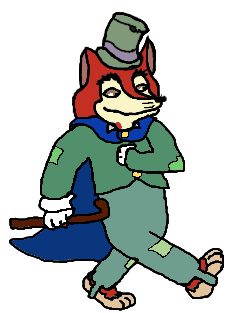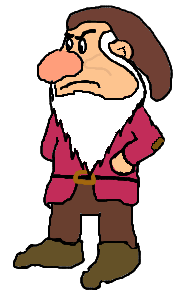 | |
|
Released: August 24, 1942 (Brazil); February 6, 1943 (United States)
Basis: Original, though influenced by South American culture
Synopsis: Several Disney animators take a journey to South America and sketch out plans for animated shorts based on the different locals they visit. A Donald Duck short is made about him visiting Lake Titicaca; a stand-alone short about a plane named Pedro delivering mail is drawn for Chile; Goofy appears in a short where he is a cowboy-turned-gaucho in Argentina; and Donald meets a new character, a parrot named Joe Carioca (who would later become José Carioca in later movies and shorts), in Brazil.
Notes:
Synopsis: Several Disney animators take a journey to South America and sketch out plans for animated shorts based on the different locals they visit. A Donald Duck short is made about him visiting Lake Titicaca; a stand-alone short about a plane named Pedro delivering mail is drawn for Chile; Goofy appears in a short where he is a cowboy-turned-gaucho in Argentina; and Donald meets a new character, a parrot named Joe Carioca (who would later become José Carioca in later movies and shorts), in Brazil.
Notes:
- This is the first in a series of "compilation films" of the 40s - as money had to be managed carefully during World War II, and as many animators were drafted to the war, it proved to be far easier to tie together several shorts rather than make a lengthy animated film, though the movie's length suffers for it - the film's only 42 minutes long.
- Saludos Amigos is also the first of two "travel" movies - this and The Three Caballeros. I suspect the emphasis on the "travel" movies was in part because Americans weren't able to travel as much during World War II as they would be able to before and after - Americans were trying to conserve gasoline and fuel they used in travelling for the war effort, and so they weren't able to travel around as much - hence, Disney came out with two movies showcasing exotic locales. The bigger reason for the "travel" movies, and especially for their focus in South America and Mexico, was to try to win the nations over from their ties to Nazi Germany, in a sort of "dollar diplomacy" tactic.
- The frame of the movie is the animators travelling to and through South America - live-action color footage is used.
- It's stated that it takes the animators three days to travel from Hollywood to eastern South America. Kinda interesting how far we've come in commercial passenger flight.
- The reason I call Saludos Amigos and The Three Caballeros "travel" movies is because of how they promote the cultures of the places they visit. They spend a few minutes here discussing Lake Titicaca, Buenos Ares, and Rio De Janero as well as its culture before the animated segments, making it feel like it's promoting South American culture (which it is) as would be a travel info movie. If memory serves me correctly, it works better with the frame in The Three Caballeros, though I haven't seen it in years, so I'll wait until I actually review it to say.
- The representation of the local cultures in South America is positive in the shorts as well as in the live action footage, which is a nice change of pace from how most animated theatrical short series of the 30s and 40s tended for now-politically incorrect depictions of American Indians or especially tribal Africans.
- First Short - "Lake Titicaca"
- Donald is referred to as a "celebrated American tourist."
- Not much to say for this short, as it plays a bit like the previous live-action segment but with slapstick. It feels a bit like the various Goofy "How To..." or "Sports" shorts with the play between the narrator giving accurate information and the main character (Donald Duck here) is the butt end of X many calamities or mishaps. It's funny, but a bit odd, considering Goofy is more of the slapstick character than Donald.
- The next segment is about Chile and its capital Santiago. Or, at least, it was supposed to be, but the animators weren't allowed to get the country on camera. Oops.
- Instead, they cut to the next short: "Pedro"
- "Pedro" is kind of a fun short, with a few gags worth a chuckle - an airplane skeleton of bone, Pedro's mother suffering from "High Oil Pressure," the "twist" at the end - though it doesn't really display much of the local culture. It does discuss delivering mail, though, and the geography is mentioned a bit, especially Mount Aconcagua.
- Actually, I kinda like how Mount Aconcagua is depicted - the "monstrous" face on it, how the rain and snow seem to be falling from it in a few shots rather than from the sky.
- Buenos Ares and Argentina are next. The focus here is on how the gauchos of Argentina are kinda like the cowboys of the United States of America. It's actually not that far off.
- Walt Disney makes a cameo in one of the animator shots.
- And so the film goes to the next short: "El Gaucho Goofy"
- This also plays like a "How to..." or "Sports" short, but since it is Goofy, it feels a bit more natural. It's easily the funniest part of the feature.
- There's a bit of play with the fourth wall - for example, the characters are practically expelled from the shot by each transitional wipe.
- Why is the horse in a dress at one point.
- The final locale represented by the movie is Rio De Janeiro, the capital of Brazil
- A shot of a few cartoony sketches of local birds is accompanied by the comment, "This is what can happen to a city when artists are turned loose." I thought it was funny.
- Final short: "Aquarela do Brazil" ("Watercolor of Brazil")
- The short has its own title cards and has a lot of build-up towards it.
- There's a bit of play with the animation/painting of this short and its characters - think the Looney Tunes short "Duck Amuck," but with a more musical focus. Between this and the songs themselves, there feels like there was a lot of effort put into the short.
- José's voicing seems... just a touch off. Not so much in the voice itself, but in the delivery - it feels just a hair lackluster. I really like the character's design, but this was the only notch I had against him.
- Unfortunately, there's not so much in the way of a story to this short - Donald meets up with José, José brings him into town, Donald samples a Cachaça and burns his mouth, then they dance the samba and that's it. The short itself is fine, but it's mostly because the art direction makes up for what it lacks in story.
- This is the end of the feature. There's no conclusion - it just pans out from the final shot of the short then shows an end title.
This was the first time I saw Saludos Amigos, and I can kinda see why it's not remembered as fondly remembered as and often packaged these days alongside The Three Caballeros - it hasn't aged well as a standalone feature. It's not a bad film by any means; the locales are beautiful, and the shorts are entertaining. The major problem is that the movie's original purposes don't reflect the United States' current state of condition, so its meaning is somewhat lost. On top of that, it's short, and it really feels like it. It's not one of my favorites, perhaps, and this isn't to deter watching it at least once, but it's just aged poorly.
Up Next: The Three Caballeros (December 18)




